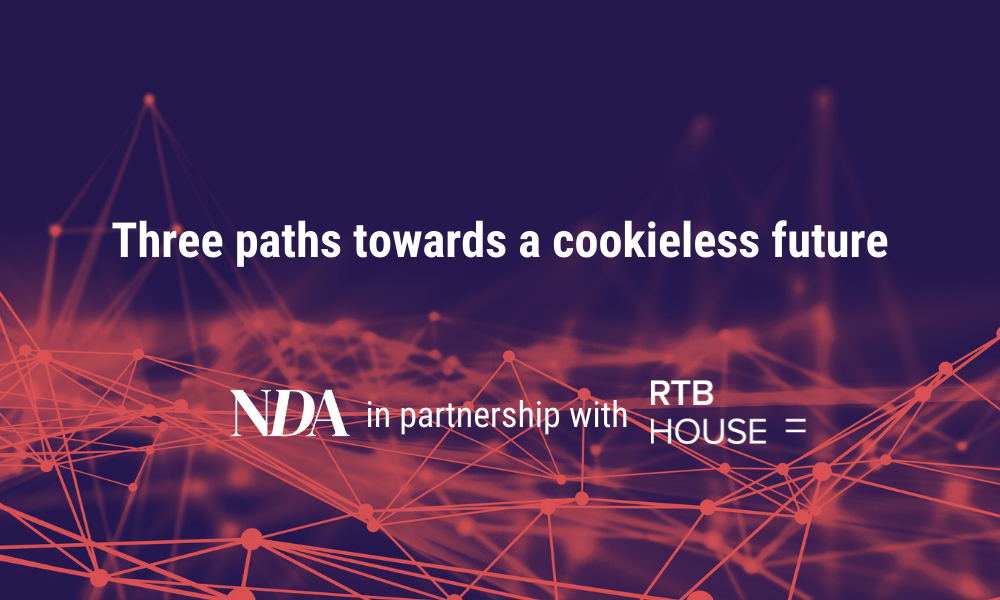By Łukasz Włodarczyk, VP of Programmatic Ecosystem Growth & Innovation, RTB House
For the past few years, much of the discussion taking place around digital advertising and consumer privacy has focused on the use (and the gradual phasing-out) of ‘third-party cookies’.
These cookies are little pieces of code which attach themselves to a digital device’s individual identity whenever a user visits a website or clicks on an ad. Think of a third-party cookie like a car number plate, which lets you identify an individual car (and car owner) as the vehicle moves from location to location. This allows marketers to track the device as it moves across the web, serve the device with targeted advertising, and measure the performance of those ads.
However, concerns about online privacy mean that tracking individual devices in this way has fallen out of favour with industry regulators and many online platforms. While Google’s browser Chrome has delayed the final withdrawal of third-party cookies until sometime in 2023, the clock is ticking for advertisers to find new ways to reach their target audiences online.
The impact of the changes taking place in the digital marketing industry cannot be overstated. We are entering an entirely new era of advertising that will demand a new approach. At RTB House, as a leading vendor of advertising services, we stay on top of all the current and future trends and changes likely to impact our industry. We are in close dialogue with browser vendors, industry bodies and regulators to figure out how to best position our technologies and support our clients in the ‘cookieless’ future.
Our analysis is that, unfortunately, over the next couple of years, the future will inevitably be complex for digital advertisers due to lack of interoperability between the major browsers and, initially at least, a lack of agreed industry standards. Despite this complexity, however, it’s already quite clear that there will be three main ways of reaching a target audience with digital advertising in the near future.
Three alternatives
The first approach, which is being embraced by the major web browsers, is to avoid the abuse of cross-site tracking by providing web users with the possibility of being anonymised within a larger group or ‘cohort’ of users.
To extend the license plate metaphor from earlier, this means losing the ability to track the plates of individual vehicles, but still allowing the tracking and analysis of the movements of similar groups of vehicles, for example, BMW drivers or vehicles bought within the last two years. These groupings can actually be very small and specific, “BMW series 3, color red with 1.6l engine, bought in September 2021,” as long as the group meets the minimal threshold of people.
There are additional tools to supplement these group methods with more precise targeting. Product-Level and Outcome-Based TURTLEDOVE (both from RTB House almost fully incorporated to current shape of Google Privacy Sandbox), for example, allow for increased product personalization and a better understanding of the user’s intent to purchase while maintaining the original privacy guarantees assigned to the group. This means that although the ad tech vendors cannot recognise you as an individual, the ads rendered on your browser will still fit with your own interests.
Collating a group of users with similar profiles or similar behaviour ensures that ad targeting can happen without compromising privacy, but obviously loses some of the precision previously available via third-party cookies.
Some advertisers and ad tech providers are investing in targeting methods that essentially look to replace third-party cookies with alternative digital identifiers that allow the cross-site tracking of individuals to continue much as before. While these methods manage to sidestep the restrictions of current data privacy legislation, it seems likely that, sooner or later, regulators and browser vendors will analyze and audit any digital IDs that may threaten individual privacy in the same way as third-party cookies. As such, these methods do not represent a sustainable and long-term fix for marketers.
A third way of reaching a target audience, which goes back to the roots of advertising, is contextual targeting. This is where a digital ad is selected and served based on the context of the content the user is looking at (e.g. a commercial for BMWs alongside an article about motoring).
The capabilities and sophistication of contextual advertising have improved significantly in recent years. Deep-learning algorithms allow contemporary contextual adtech to understand online content on a level far beyond URLs; it can now draw context from pictures, keywords and even phrases within text. Indeed, the weighting of keywords is crucial, otherwise, it would be easy to end up targeting content about the sport Golf instead of Volkswagen’s Golf car model.
The correct route or combination of routes to the cookieless future is different for each of our clients. For this reason, our own technology platform allows us to combine all three of the methods described above into one solution, giving our clients the time, freedom and expert support they need to find their own way forward.
Find out more about cookieless solutions for your business at blog.rtbhouse.com.









